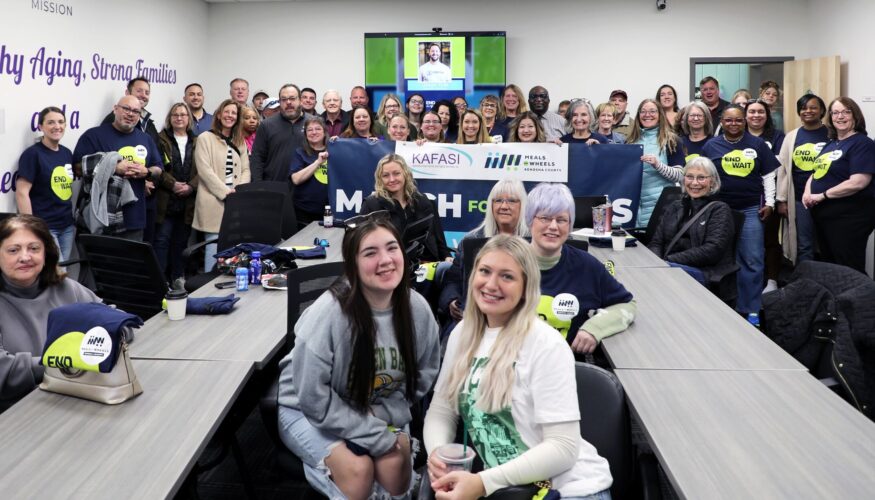According to Gallup’s 2024 Global State of the Workplace report, employee engagement plateaued in 2023—and overall employee well-being declined. Another indicator from North America’s most trusted public opinion polling firms shows that nearly all workers (91%) want to maintain a flexible hybrid and remote work schedule—while a majority of employers (54%) want employees to return to the office.
The disconnect can be expensive—and damaging. Gallup estimates that low employee engagement can lead to the loss of nearly $9 trillion in global GDP. It also affects employees directly—25% say they feel lonely in their jobs, and 54% say they’re actively looking for new ones.
A Threat to Long-Term Stability
Whether your employees work in-person or hybrid schedules, much of the technology they use for day-to-day duties is inefficient and unsafe. Business data may be accessed on insecure personal devices. Network protection may not extend to at-home Wi-Fi connections. And free file collaboration tools may not encrypt sensitive documents in the cloud.
For businesses across North America, this can represent a big threat to long-term stability. That’s why it’s so important to keep employees engaged. Your business can empower employees, keep them connected, and enhance cybersecurity, no matter where work is done.
With more than 25 years of experience delivering IT solutions—and nearly five years leading the way with remote and hybrid solutions—CMIT Solutions has identified the following key strategies for unified communications:
- Enable collaboration. Seamless teamwork is critical for business success, no matter where your employees are based, what hours they work, or which apps they use to complete their work. But unified communications don’t happen by accident—just ask anyone who struggled through the early days of the pandemic to learn new platforms or adapt existing presentations to a virtual setting. Instead, it’s important to build safe, secure, and supportive online environments that give your employees the right tools to do their best work. That kind of ecosystem isn’t easy to build—and can be even more difficult to maintain. But with trusted IT support, you can empower front-end users while safely managing back-end access and administration.
- Enhance security and performance. Employees expect their tools to work every time they log in so they can meet, call, message, share content, and collaborate across apps. However, security and usability issues inevitably crop up, especially when hybrid workers use their own devices to access company networks or log on to the Internet through unprotected Wi-Fi networks. That’s why smart IT support should be proactive, anticipating problems before they occur—not just reacting after they knock systems offline and disrupt users’ workdays. Smart IT support should maintain cybersecurity protections and enterprise-grade compliance for all assets and devices, no matter where they’re used.
- Consider cloud-based solutions for seamless support. These can range from real-time file collaboration to secure video meetings with encrypted chat to unified communications solutions that centralize all apps into one platform. Multi-factor authentication (MFA) and single sign-on (SSO) are the best methods to manage such tools, creating a single secure identity that your employees can use. A trusted provider can help you configure these cloud-based settings, outlining policy controls that mitigate the impact of data loss and credential compromise.
- Implement data backup and disaster recovery procedures. No matter where your employees work or what industry your business operates in, secure data protection is critical for long-term success. This includes regular, remote backup to capture day-to-day work and easy data restoration in case of malware, ransomware, or human error. Disaster response protocols should also address common data loss scenarios, spell out seamless virtualization policies, and document success metrics for recovery time. Simulated exercises that outline all of the above components can keep everyone prepared.
- Develop training, education, and onboarding strategies. Speaking of being prepared, even your savviest team members could probably use additional support. Many employees—longtime veterans and new hires alike—struggle to adapt to constant changes, making it critical to create a system of training, education, and onboarding for everyone. Compiling training materials on hybrid work best practices and cybersecurity essentials can set high standards for success while giving your IT support staff or back-end administrations strong control over day-to-day operations.
Nearly five years after the COVID-19 pandemic upended the state of work, many businesses still struggle with these changes. Many believe that they will cost too much money to implement. Other hesitations include valid concerns about data security, office culture, and employee engagement.
How Can IT Support Help?
At CMIT Solutions, our 250 independently owned and operated offices across North America provide proactive IT support for unified communications and hybrid work. We can move IT infrastructure online or fortify physical offices—whatever it takes to help employees do their best work.
We take a comprehensive approach to IT solutions, combining strong security features like VPNs (virtual private networks) with critical features like automated security updates and software patches. We can block phishing scams and ransomware infections while streamlining every communications platform under the sun—Zoom, Microsoft Teams, Slack, WebEx, GoToMeeting, and many others.
Today’s workplace is always changing, and we know that tomorrow’s situation may look entirely different. That’s why we keep up with evolving trends that meet your company’s short-term needs while also developing long-term strategies for workforce success.
If you’re looking for trusted support that empowers your staff and protects your business, contact CMIT Solutions today.













